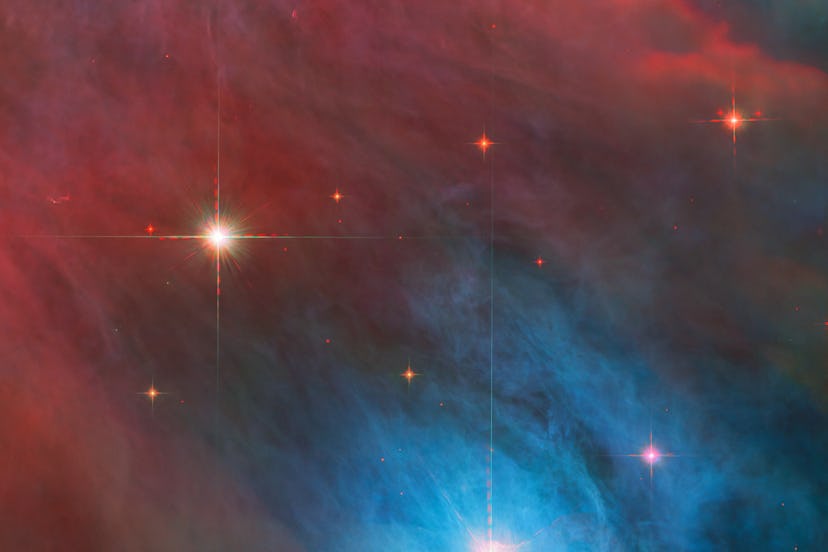NASA Hubble Photo Shows Twinkling Lights Sparkling Through Technicolor Gas
A new photo released by the NASA/ESA Bubble Space Telescope proves that space is a magical wonder.

Stargazers on Earth get to witness the moon's changes and sometimes spot a meteor zipping through or even see Mars disappear behind the moon. With those amazing shows, we get to watch, it’s hard to imagine there being better out there. But there is — and a new photo released by the NASA/ESA Bubble Space Telescope proves just how much we can’t see from Earth.
On January 27th, NASA shared a new photo from Hubble that shows an incredibly colorful cloud with twinkling lights sparkling through. The Orion Nebula, this region of star formations, is approximately 1,450 light-years from Earth. And there’s more going on here than just awe-inspiring beauty.
Can you explain what we see in this photo like we’re 5 years old?
According to ESA, in the center of the photo, you’re looking at the bright variable star V 372 Orionis, with its companion star in the upper left side of the image.
“These young stars experience some tempestuous moods and growing pains, which are visible to astronomers as irregular variations in luminosity,” the writeup from ESA reads. “Orion Variables are often associated with diffuse nebulae, and V 372 Orionis is no exception; the patchy gas and dust of the Orion Nebula pervade this scene.”
This image was taken from two of Hubble’s instruments including the Advanced Camera for Surveys and the Wide Field Camera 3, both of which look at different wavelengths and infrared signatures. And this photo is the overlay of the data collected from both.
But what are you looking at? It’s a cloud, essentially, showing the gasses surrounding the Orion Nebula.
“The four spikes around the brightest stars in this image form when an intense point source of light, such as starlight, interacts with the four vanes inside Hubble that support the telescope’s secondary mirror,” ESA explains.
Visit NASA to learn more about the bright variable star V 372 Orionis.
This article was originally published on